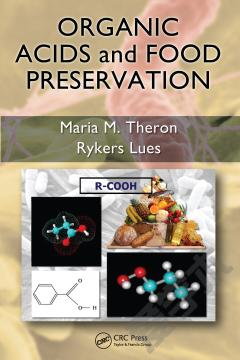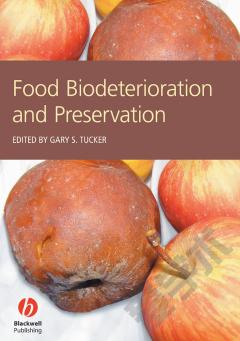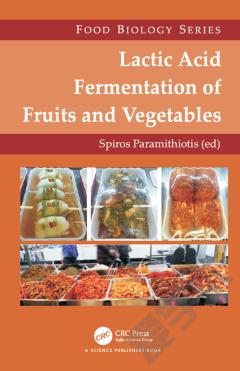Organic Acids and Food Preservation
Introduction The evolution of preservation with organic acids: from stone age to space age Unrivaled advantages Economic implications: "safer food, better business" Legislative issues in food production Problems in an "organic world" New and emerging pathogens Nature and composition of organic acids General characterization Structural description An overview of individual organic acids and their applications General applications Food products naturally containing organic acids Application of organic acids in food preservation Foodstuffs Industrial applications Salts of organic acids Organic acid combinations Considerations in the selection of organic acids Organic acids in antimicrobial packaging Organic acids in animal feed preservation Concentrations A review of current methodologies Recommended applications Control of common pathogens Organic acids as additives in chilled foods Marinating Microbial organic acid producers Predominant antimicrobial substances produced by LAB Principles of lactic acid fermentation Other applications of LAB Genetic and bioinformatic characterization of LAB Acetic acid bacteria (AAB) Susceptibility of and resistance to organic acids Other organisms Mechanisms of microbial inhibition Activity of organic acids Physiological actions of organic acids Factors that influence organic acid activity The role of pH Antibacterial action Antifungal action Antiviral action Acidified foods Comparing effectiveness of organic acids with inorganic acids Spectra of inhibition Improving effectiveness (Physical) factors that will enhance effectiveness Comparisons among organic acids Problems associated with organic acid preservation Adverse effects on humans and animals Adverse effects on foodstuffs Protective effects on microorganisms Sensorial effects and consumer perception Recommended daily intake Odors and palatability Cost Application methods Oxidation Ineffectiveness Influence on tolerance to other stresses Large-scale organic acid production Naturally occurring weak organic acids Microbial physiology and organic acids Substrates and yields Industrial fermentation Organic acid demand Lactic acid production Citric acid production Resistance to organic acids Intrinsic (natural) resistance Development of resistance Inducible resistance Mechanisms of resistance Transmission of resistance Extent of the situation E. coli O157:H7 Protective effects of organic acids Possible advantages of organic acid resistance Industry strategies Acid tolerance Delineating the difference among acid adaptation, acid tolerance, and acid resistance Role of organic acids in tolerance Acid tolerance of gastrointestinal pathogens Cross-resistance to secondary stresses Mechanisms of acid tolerance development Known acid-tolerant organisms Development of acid tolerance Implications of acid tolerance Contribution of acidic foodstuffs Analytical procedures Interacting mechanisms Control strategies Modeling organic acid activity Genomics Growth models in defined systems Different predictive models Predictive indices for organic acids Toward improving on existing models Significance of modeling Legislative aspects Differences in regulatory authorities Application guidelines for organic acid preservation The role of general food safety regulations Codex Alimentarius Commission Proposed amendments Role of government and parastatals Feed preservation Commercial trials Incidental and natural organic acid occurence Honey Sourdough Berries Wine Coffee Vinegar Acid foods Kombucha Edible films Summary Biopreservation LAB and biopreservation Other organisms implicated in biopreservation New technologies and applications Consumer acceptance Organic acids and probiotics Novel applications for organic acids Emerging challenges Consumer satisfaction Optimizing organic acid application in animal feed Preservative combinations Antimicrobial packaging Optimizing commercial trials New possibilities in minimally processed foods Alternatives to washing techniques Alternative application regimes Recognizing the need in RTE foods Detection of organic acids Traditional detection methods Contemporary methods The importance of effective detection Detection in specific foodstuffs Characteristics of detected organic acids Comparing sample preparation techniques References
{{comment.content}}








 京公网安备 11010802027623号
京公网安备 11010802027623号